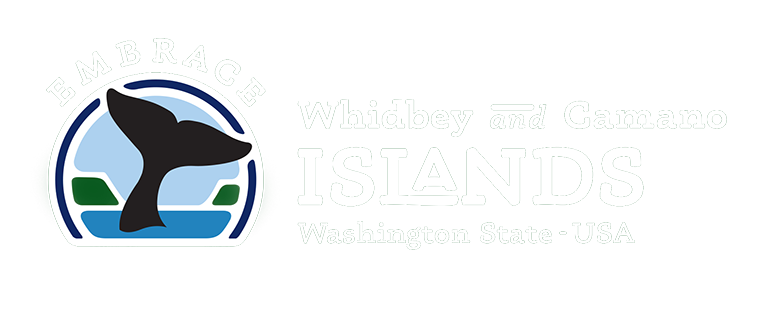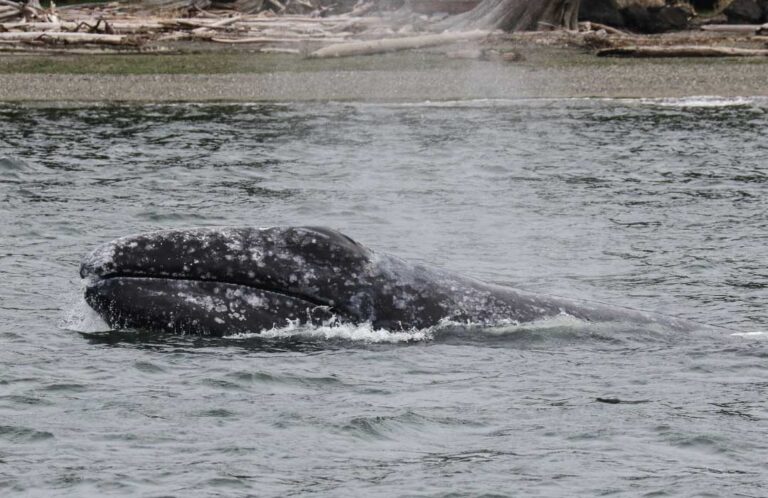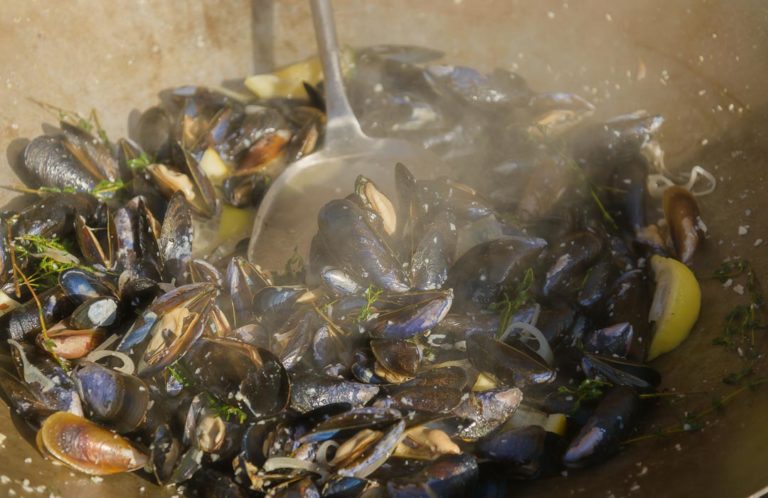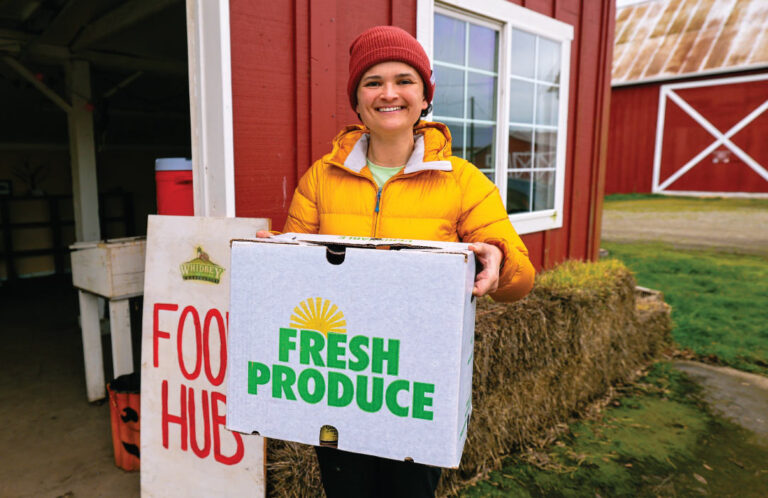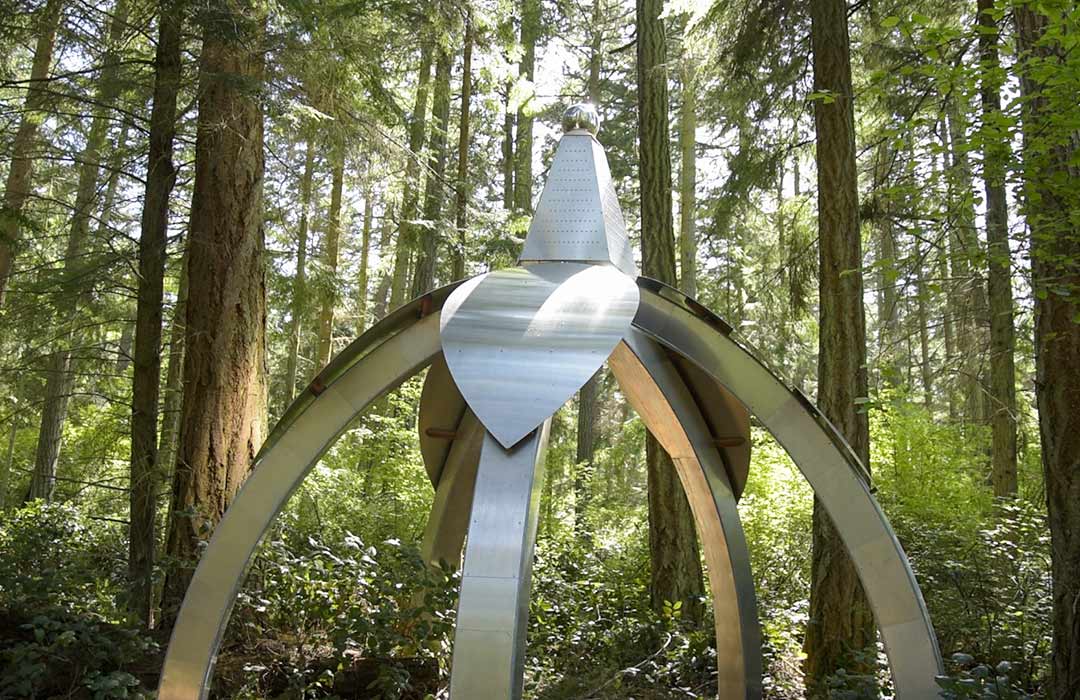
Estimated reading time: 5 minutes
I blame the rhodies. I kind of also blame the rain.
Here in the Pacific Northwest, our mild winters and long springs are perfect for plant life. However, the Rhododendrons take things to an extreme with a spring-long explosion of color when most other plants are just waking up. And we Northwesterners have to compete. So we create our own explosions of color, of glass, of stone, of whatever we can find to join the rhodies in a colorful celebration of our own with outdoor art, galleries in the woods, and park-like settings where green and gray give way to yellow, red, orange, and more.
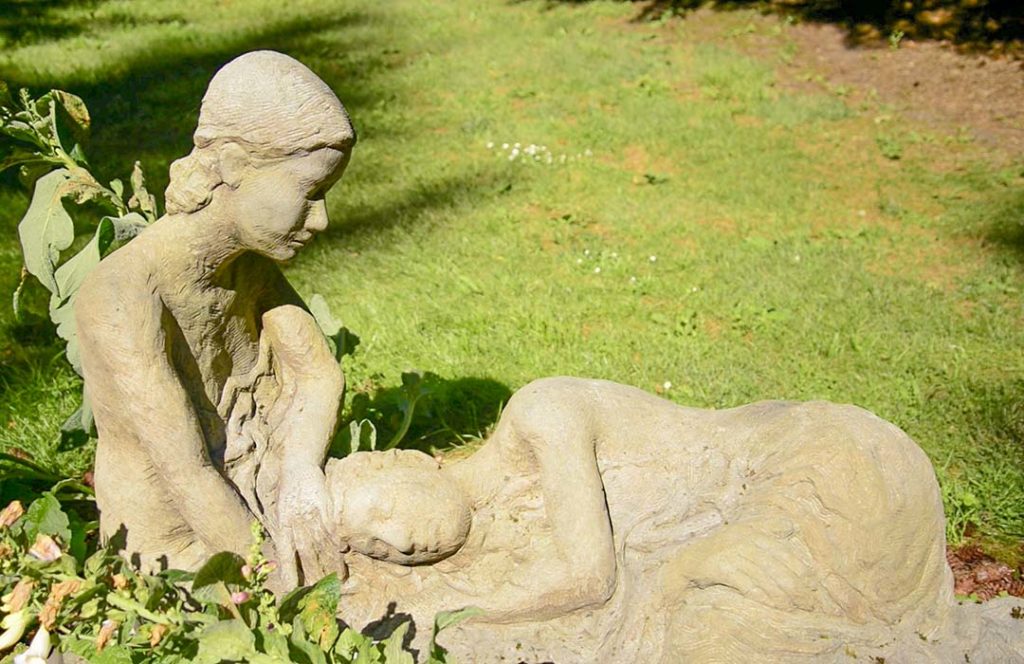
From the new kid on the islands, The Price Sculpture Forest, to the park-like beauty of the Matzke Art Gallery and all the public art that decorates our parks, streets, and sidewalks, color and creativity abound.
The galleries, especially, show a wide range of works. For example, walk around one corner, and you’re confronted with a giant silver eagle. Elsewhere, you might see a red metallic dancer gesturing toward the sky.
The Price Sculpture Forest this spring added a new feature, an augmented reality exhibit that may be the first of its kind anywhere. It’s a collection of four real-life statues that exist elsewhere but, through the magic of augmented reality, are virtually on exhibit in the forest.
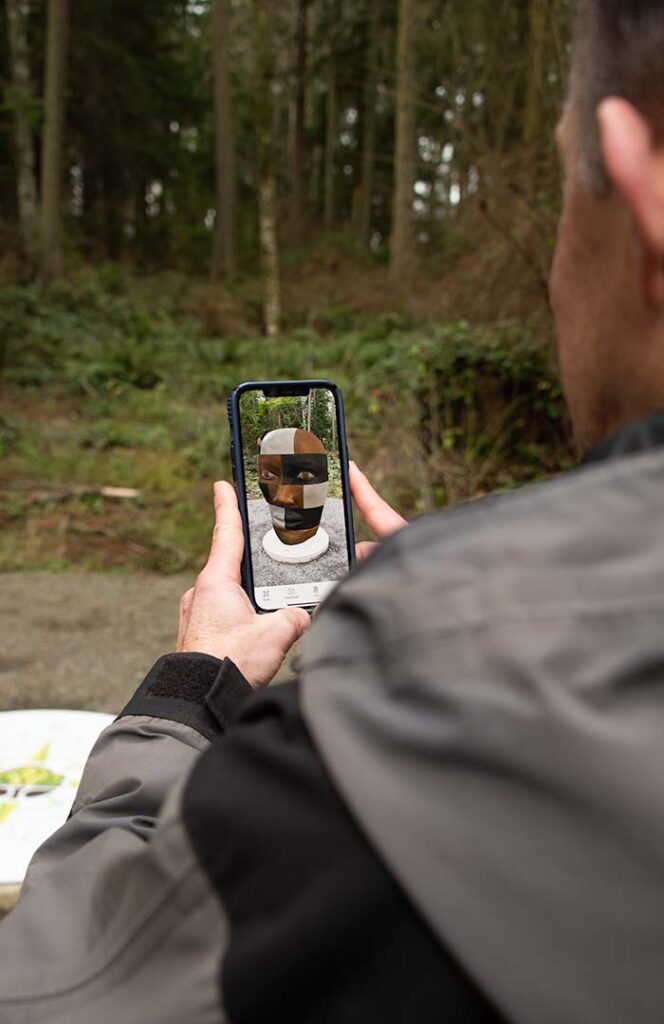
“On Whidbey and Camano Islands, we’ve joined in the outdoor celebration with galleries and public art of all kinds that surprise, delight, and make us smile.”
Imagine walking into a clearing, taking out your smartphone, and using the phone’s camera to view a full-size 3-dimensional piece of art. Then, using the phone, you can walk around it with the trees of the sculpture forest in the background. You can even take a photo of someone standing next to the statue.
Beyond that, the sculpture forest features 16.3 acres and two trails with sculptures around every bend. One path, Nature Nurtured, is very level (for a forest floor) and is 4 feet wide. The second one, Whimsy Way, is steeper and features fun sculptures to delight the kid in everyone.
On Camano Island, The Matzke Fine Art Gallery and Sculpture Park puts art in a park-like setting. A gently sloping grassy lawn is the natural frame for statues by professional artists around the country. The land has been specifically shaped to provide “scenes” to frame the artwork. Give yourself plenty of time to explore this expansive park.
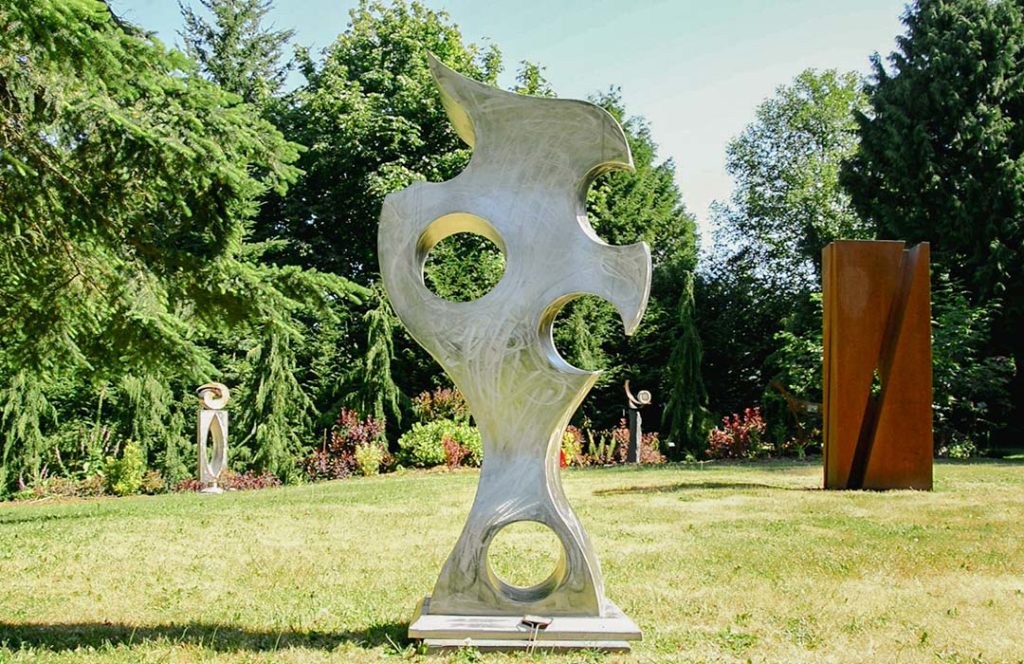
The Matzke Gallery also has a traditional indoor gallery. There are multiple rooms featuring fine art that ranges from paintings to glass to smaller sculptures. The gallery also has traditional shows, including bi-annual shows of the Women Painters of Washington, auctions, and workshops.
But what about those rhododendrons? In addition to making occasional appearances at other galleries, they’re front and center at Meerkerk Gardens. It features a 10-acre display garden surrounded by 43 acres of natural woodlands with more than two miles of trails. The rhodies are their signature art. They bloom at different times of the season, so each visit brings new surprises.
The blooms attract more than their fair share of honeybees and are fun to watch as they go about pollen-gathering.
The garden also offers classes and music events throughout the year. The key idea in this art gallery devoted to nature is to slow down and enjoy the peace, quiet, and beauty.
Nature and art are paired with peace and quiet differently at Earth Sanctuary near Freeland. It’s a peaceful and magical sculpture garden, nature reserve, and retreat with two miles of trails, three bird-filled ponds, and a variety of powerful sacred spaces. While walking the trails, experience the labyrinth, dolmen, two stone circles, two Medicine Wheels, a Buddhist stupa, artworks, and a habitat ideal for observing birds and wildlife. The thoughtfully audacious 500-year goal of Earth Sanctuary is to create an old-growth forest. More than 3,350 trees and 15,000 native plants have been planted to date.
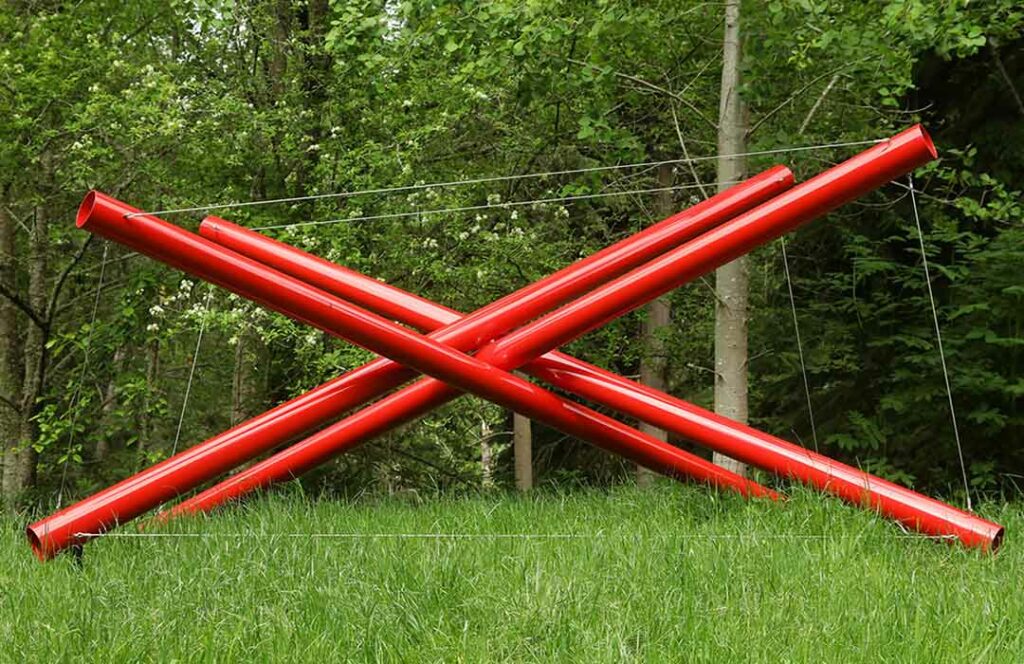
Camano Island’s Freedom Park, a park built by residents and named after the September 11, 2001 terrorist attacks, is also filled with public art sculptures from regional artists.
Two other galleries in the woods are in a transition phase and open only by appointment. The Cloudstone Gallery was created by the late artist Hank Nelson, whose works can be found throughout the region. The Cloudstone Foundation will facilitate group tours of Nelson’s 20-acre gallery. The Whidbey Island Sculpture Experience, located at the north end of Whidbey Island, is still in its formative stages and is also only open by appointment.
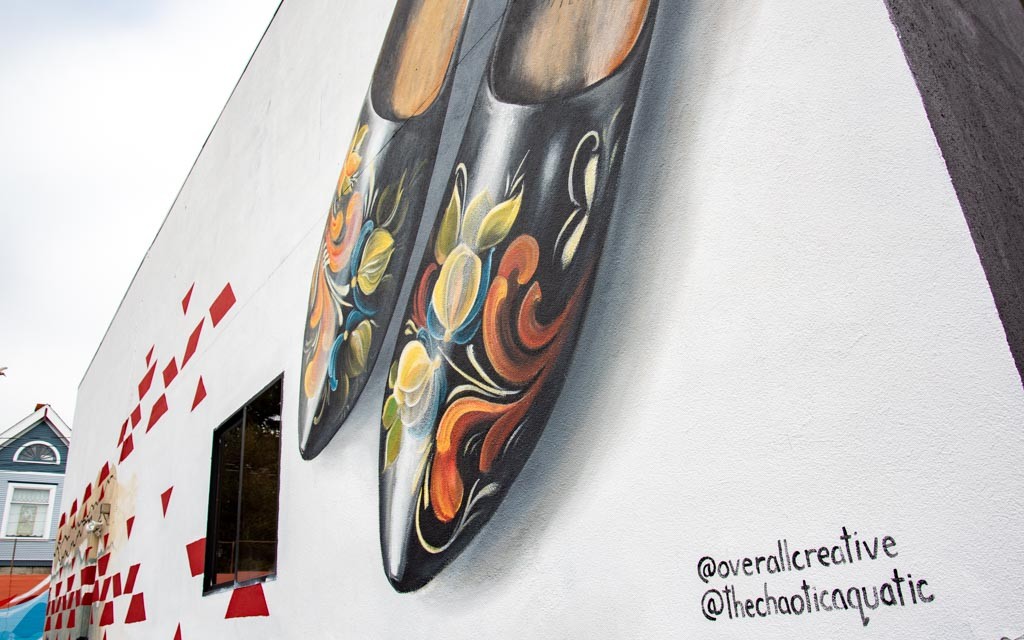
And finally, some of the largest art on Whidbey and Camano Islands is Oak Harbor’s Allgire Project. It features an event space and a massive mural gallery adorning the sides of several buildings.
Imagine klomppen (wooden shoes) that fill the side of a building, yet so detailed you’d think it was a photograph, and you’ll get the idea of this part of the region’s outdoor art experience.
About the author:
